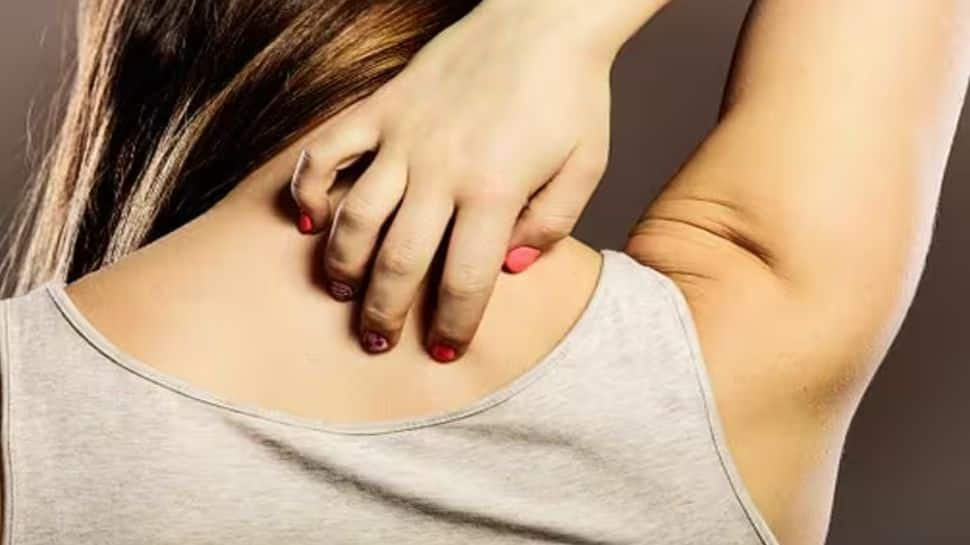A research team led by Professor Kelvin Yeung from the Department of Orthopaedics and Traumatology, School of Clinical Medicine, LKS Faculty of Medicine, the University of Hong Kong (HKUMed) developed a new microneedle patch to provide a highly effective non-antibiotic approach for the treatment of skin infection. In summary, the design developed using ultrasound-responsive zinc-based metal-organic framework (MOF) antibacterial nanoparticles offers pain-free delivery of bacterial infection on skin tissue while also facilitating skin restoration.
The innovative microneedle has a diameter of around 50 microns, equivalent to a human hair. The findings were reported in the journal Science Advances. Acne is a widespread skin disorder that affects more than 80 per cent of teens and young adults worldwide. The major reason is excessive lipid production, which clogs hair follicles and creates a hypoxic microenvironment in skin tissue.
This unfavourable situation promotes the growth of Propionibacterium acnes (P. acnes) bacteria. Infected pimples, which are considered skin infections, are mostly caused by the P. acnes bacterium, which affects millions of individuals worldwide. It not only causes severe physical and mental anguish in the sufferers, but it can also progress to a chronic inflammatory illness if not treated properly.
cre Trending Stories
Non-prescription therapy (such as benzoyl peroxide and salicylic acid) or the administration of antibiotics orally or topically is usually used in clinical management. Such therapies, however, can be useless or harmful.
In general, the first-line treatment for infected pimples is antibiotics administered either orally or topical. However, the therapeutic effect of topical antibiotic treatment is concerning, particularly when the drugs pass through the skin tissue. Also, the treatment becomes less effective, when bacteria are drug-resistant or when they migrate to subcutaneous tissue.
Especially, P. acnes bacteria can secrete extracellular polysaccharides to form a biofilm that blocks out the attacks initiated by antibacterial agents or immune cells.
Even most microneedle products on the market mainly use pharmaceutical ingredients to treat acne. However, repeated applications of antibiotics may reduce the sensitivity of bacteria to drugs. Patients who have been affected by acne for a long time will know that the effects of the same treatment products can be significantly reduced after long-term use.
HKUMed team has invented a new microneedle patch that facilitates the transdermal delivery of ultrasound-responsive antibacterial nanoparticles to treat the infection induced by P. acnes at minimal invasive approach. In the current design, ultrasound-responsive antibacterial nanomaterials are introduced to the microneedle patch that responds to bacterial infection quickly and efficiently.
The use of drugs is avoided in the treatment of acne. The modified nanoparticles comprised of ZnTCPP and ZnO are able to produce a substantial amount of reactive oxygen species (ROS) subject to ultrasound stimulation that can effectively oxidize the key cellular macromolecules of bacteria. The results demonstrate that the killing of P. acnes bacteria mediated by ROS can reach to 99.73 per cent after 15 minutes of ultrasound stimulation.
Also, the levels of inflammatory markers, including tumour necrosis factor-a (TNF-a), interleukins (ILs), and matrix metalloproteinases (MMPs) are significantly reduced. Furthermore, the zinc ions released can elevate the DNA replication-related genes, thereby augmenting more fibroblasts towards superior skin repair.
Professor Kelvin Yeung Wai-Kwok, remarked, ‘The new microneedle patch enabling ROS generation upon ultrasound stimulation, regarding as a non-antibiotic and transdermal approach, can not only effectively address the infection induced by P. acnes bacteria, but also facilitates the skin repair due to zinc ion release. Due to the specific killing mechanism of ROS, we believe that this design is also able to address the other skin infections induced by fungi, parasites, or viruses, such as tinea pedis (namely “Athlete’s Foot” or “Hong Kong Foot” in slang).’
This research study was led by Professor Kelvin Yeung Wai-Kwok, Department of Orthopaedics and Traumatology, School of Clinical Medicine, HKUMed. The first author Xiang Yiming is a PhD candidate under Professor Yeung’s supervision. The research interests of Professor Yeung’s team include orthopaedic biomaterials, musculoskeletal tissue regeneration and anti-bacterial infection.












































